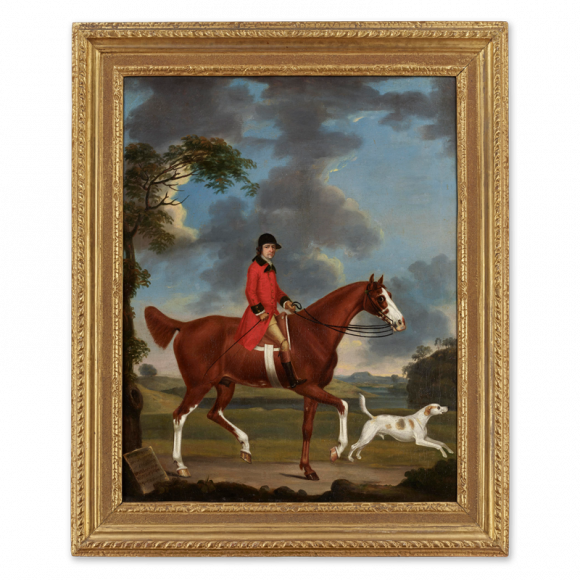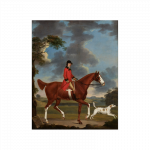In the world of field sports in the 18th century in Britain things began to change. At the beginning of the century, if you wanted to go hunting on horseback you inevitably had to be in the close circle of one of the great landlords of the day, who would have been the only people to own a pack of fox-hounds. But as the century unfolded the demand to participate in such activities rose among the wealthier middle-classes and so the subscription pack came into being. If you had money, you could pay an annual fee to join a hunt and participate on your own terms. A kind of democracy was arriving on the hunting field. This meant that more and more people became involved in the sport, and as the sport developed these people were willing to spend larger and larger sums of money on their horses to ensure that they could carry them at speed for a whole day and indeed over obstacles if required.
Inevitably as good hunting horses became more and more prized, the desire to record them for posterity followed. This saw the advent of what we now call the ‘sporting painter’ who would record your prize equine possession for you. Eventually, instead of artists developing horse-portraiture as a side-line of their art, by the middle of the 18th century an artist, if he was considered good enough by his patrons, could make a passable living solely from painting horses.
Thomas Stringer, who came from Knutsford in Cheshire, was one of these. The rather more artistically inclined landscape painters, who partially turned their hand to horse painting, such as John Wootton for example, gave way to the horse painting specialist. These painters found that their patrons demanded thoroughly ‘correct’ recording. So rather than expressing any artistic licence, these horse portraitists became more and more detailed in their approach. The colour and the conformation of the horse had to be exact as did the rendering of the harness, and indeed the costume of the owners, their grooms and their trainers if they appeared in the picture. Perhaps the best of these mid-century painters was James Seymour (1702-1752), who was quite remarkable in his attention to detail. But of those following close behind, the Sartorius family of painters, Thomas Spencer and Thomas Stringer were very good practitioners. Indeed Stringer was known to have worked with Seymour in his early years and there is much similarity to be found between these artists in Stringer’s best work. The game would change with the arrival of the great George Stubbs on the scene towards the end of the century, but as demonstrated in this picture the mid-century men had their day and a very attractive day it was too.
In this present painting all of the ingredients of a very good mid-18th century work are present. Unlike inferior works of the time, Stringer’s horse is solidly constructed, beautifully detailed (the shod hooves with their nails are exceptional) and every inch the hunter who, unlike a racehorse, does look as if he would carry you safely in and out of difficult spots on the hunting field. His white facial markings are so quirky that they can only be exact. And we can be grateful that Stringer has recorded not only his own name on the stone tablet bottom left of the picture, but also those of the sitter and even the horse and the favourite hound. This is one of those pictures that tell us much about the English land-owning classes and their preferred way of spending their leisure time. Colonel Sloper, a good career soldier by profession, was clearly extraordinarily fond of this horse and even this hound. Stringer in turn has done his patron proud by producing one of his very best single horse-portraits.
Re the sitter : It is likely that our man Sloper is Robert Sloper (1729-1802) who had a very decent military career with variously the 1st Dragoon Guards, the 14th Light Dragoons and the 4th Dragoons. He fetched up, after a successful finale in India, as General Sir Robert Sloper KB. But interestingly, following his career through with his various promotions, his dates do seem to fit. He was born in 1729 which would make him just shy of his 40th birthday in our picture (1768). That fits. Similarly he was made Lt. Colonel in 1759 (commanding the 1st Dragoon Guards) and his next promotion was to General in 1771. So at the time of our painting (1768) he would indeed have been 'Colonel Sloper', as titled by Stringer on the tablet in this picture.




